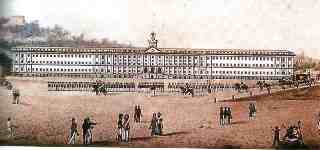It was not a criticism, honestly: at worst a friendly banter on the benefits of a 20/20 hindsight

Let's assume that Naples is not invaded during the crisis of 1821 ITTL (maybe if the Muratians play a good game Naples will not even be directly involved), so there is no expenses to reimburse to Austria.
Naples will still need capitals to pursue its economic goals. The most obvious solution is to sell government debt abroad, possibly guaranteed by government properties (with or without a cartolarization). The Rotschild might be useful. I would not be worried by the fact that some branch of the family was close to Vienna, another one to London or a third one to Paris.
Your comment on the fact that Naples is a big city cannot be faulted, but I wonder if Naples is not too big for the kingdom of Naples. It is draining resources (both economical and intellectual) from the provinces which is not a good thing.
